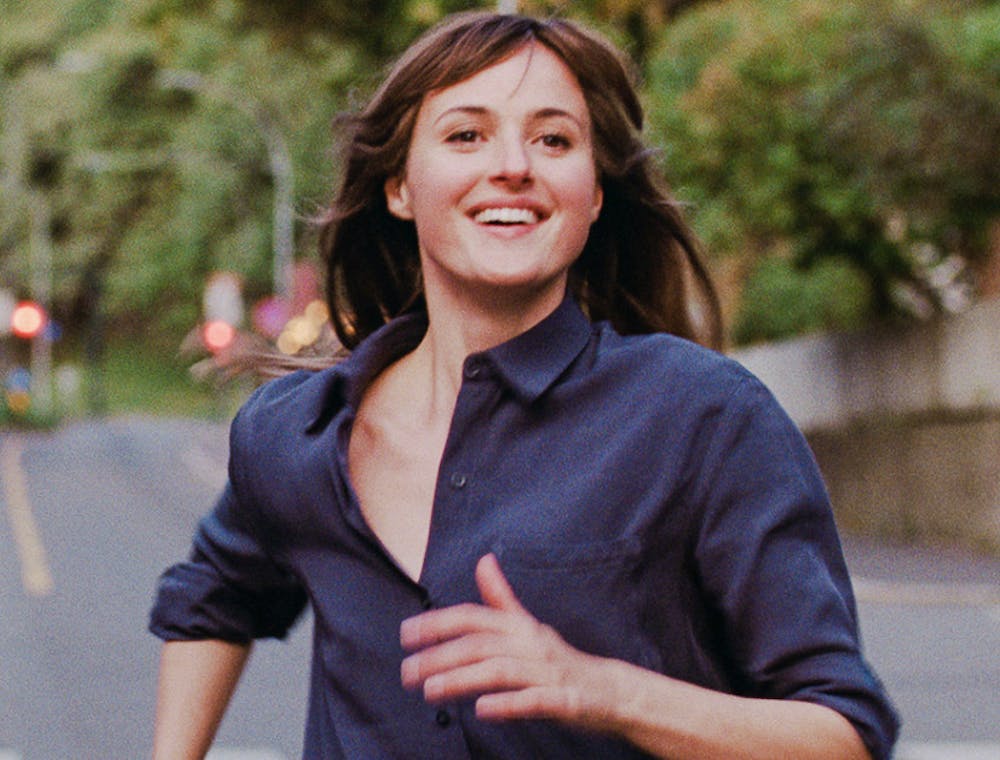As the end credits roll on Joachim Trier’s “The Worst Person in the World,” the viewer’s first thought might fall along the lines of “that film lied to me.” To be clear, this is no Watergate-level nefarious lie. It’s an innocent falsehood that makes the truth even better. This deception on Trier’s part comes in the fact that the supposed “worst person in the world” is incredibly likable. In fact, that might be underselling it. Renate Reinsve as Julie, the heart and soul of the entire film, is nothing short of unboundedly phenomenal.
Julie is captivating because she is depicted honestly without any sheen of superficiality. She doesn’t quite know what she wants out of life, what she wants to be or who she wants to be with. The film follows Julie’s decision making, or lack thereof, over the course of a year from its prologue through 12 chapters — which range from small vignettes to semi-self-contained short films — to the epilogue. The filmmaking and structure of “The Worst Person in the World” is loose, but not in an disorganized way. The film is flexible in the way it transitions from section to section and scene to scene. Much like with life itself, there are trajectories you expect the film will follow, but then out of nowhere someone or something new shows up and captures the audience’s attention.
The film focuses on two simultaneous relationships in Julie’s life: one with her boyfriend Aksel (Anders Danielsen Lie), a successful comic book artist whom she meets at the very beginning of the film, and another with Eivind (Herbert Nordrum), a man with whom she has a meet-cute and develops a “will-they-won’t-they” dynamic with. Both of their characterizations get filtered through her perspective. They both bring out the best and worst of Julie in different situations, but it never swings to one extreme too often — their relationships show the full scale of human emotion. Nothing is sensationalized in any of these dynamics; everything is grounded. Julie, Aksel and Eivind sometimes act mean and selfishly, but these actions are not a knock on the quality of their character — they are an affirmation of their humanity.
Even in the surreal scenes of the movie, there remains truth. Two scenes break the established realism in quite drastic ways. In one, Julie attempts to sort out her life by pausing reality around her and setting off on a jog throughout Oslo. She is surrounded by citizens who have become mannequins of themselves as she searches for one specific person. In another scene, Julie and a group of friends trip on mushrooms, which is executed with overexaggerated, reality-changing visuals that reveal certain displeasures in her life. Both scenes, while absurd in their presentation, seek to comment on very real aspects of Julie’s headspace. Trier had to go beyond the sphere of reality in order to dive deeper into Julie’s psyche.
While each scene and individual performance is masterful, the film slightly hiccups when it comes together as a full composition. The issue is not the film’s format, as the episodic nature of the story is able to dissect characters in an exacting and deeply fascinating way. It's more that not much is learned after the credits roll. To put it vaguely, many monumental life events happen to Julie in the final third of the film and the reactions to them seem a little underplayed in relation to their objective significance. The film exudes charm and relatability, but once the tone shifts to more pressing matters, those traits falter.
This is not to say that these issues ruin the movie — far from it. In most aspects, the film is brilliant. The ending is not bad by any means, but it does makes you wonder if the movie understood its own message. The genre is fluid throughout the film, with most of it feeling almost like a romantic comedy in form, sans much comedy. The genre fluidity is great as it means the movie is able to capture a larger range of real emotions, adding to its humanistic presentation. The variable tone of “The Worst Person in the World” leads to some loose ends that must be tied up before the film’s finale, but Trier’s excellent script and direction and Reinsve’s phenomenal performance are able to meet the task.
Even for its faults, “The Worst Person in the World” is able to do something that most movies can’t. It makes you feel like you know and understand the protagonist on a profoundly deep level. The relationship between actress and director is at near virtuoso level, as Reinsve reads her lines and plays to the style of Trier’s filmmaking as though that was what she was born to do. The script could have been a complete mess and filmed on a flip-phone and you would still witness one of the best performances of the past few years. Luckily, the script is quite good and the filmmaking is slick, stylish and well thought-out. “The Worst Person in the World” may not quite be able to stick the landing, but its journey to that final point is so damn good that you’ve got no other choice but to forgive it.

Finn Kirkpatrick was the senior editor of multimedia of the Brown Daily Herald's 134th editorial board. He is a junior from Los Angeles, California studying Comparative Literature and East Asian Studies. He was previously an arts and culture editor and has a passion for Tetris and Mario Kart.





